#historical hanfu
Photo
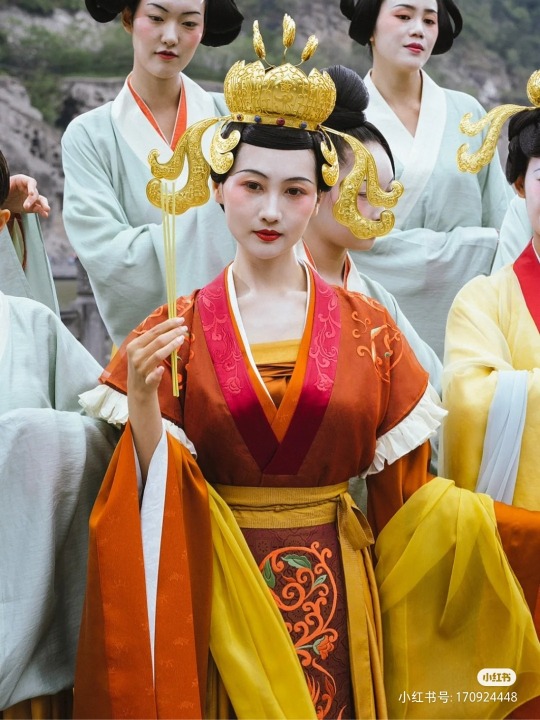




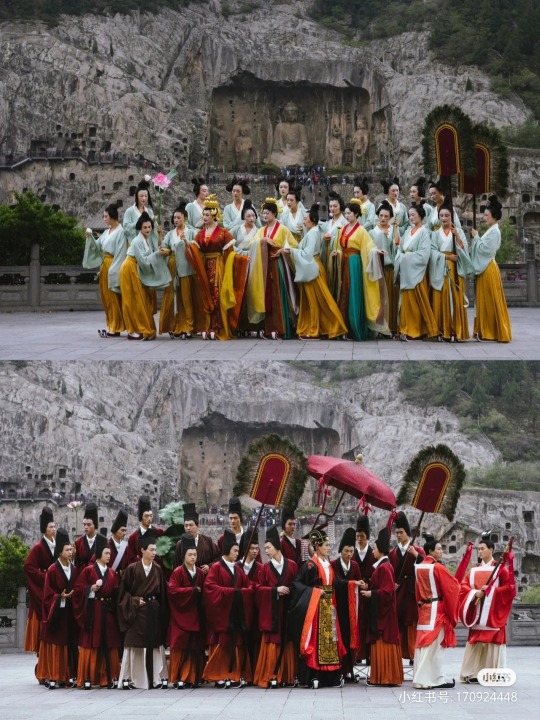
chinese hanfu in weijin period
291 notes
·
View notes
Text
[Hanfu · 漢服]Chinese Warring States period(475–221 BC) Chu (state) Hanfu Based On Chu (state) lacquer figure



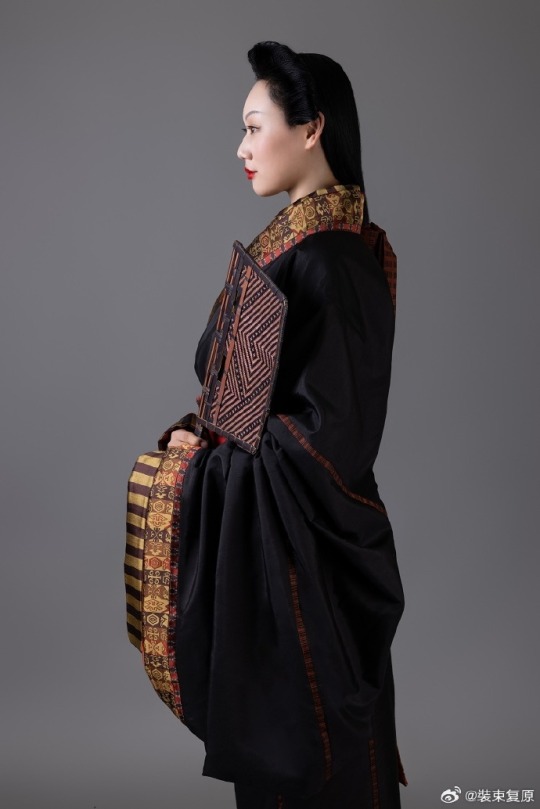
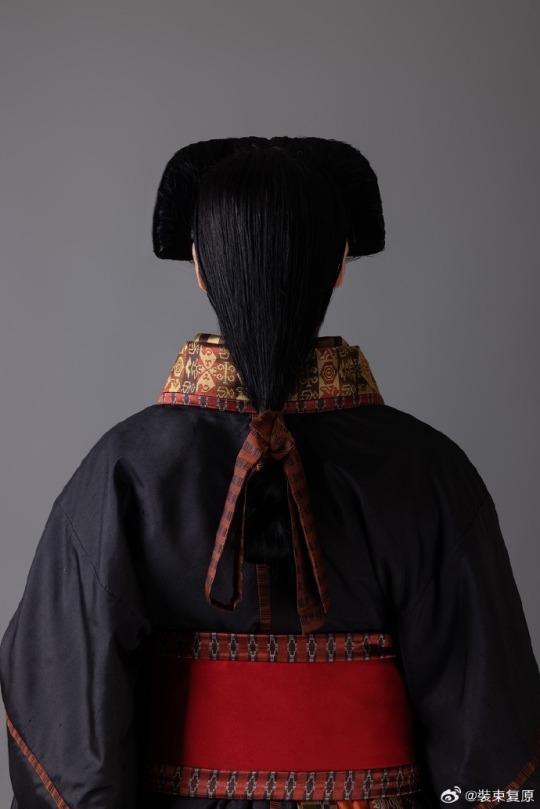
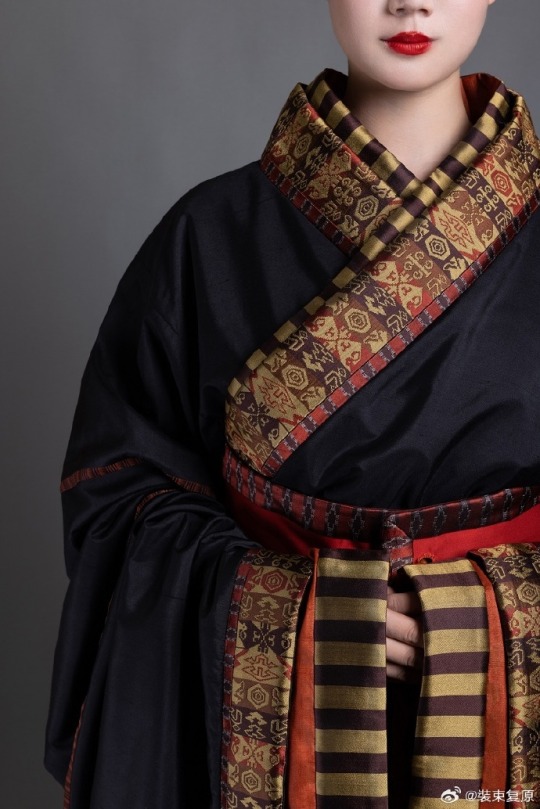
【Historical Artifact Reference】:
Lacquered wood figurines unearthed from Chu State Tomb in Shayang Tumbun Chu Tombs/沙洋塌冢楚墓出土漆俑

Collar cloth and robe unearthed from china Mashan Chu Tomb N19
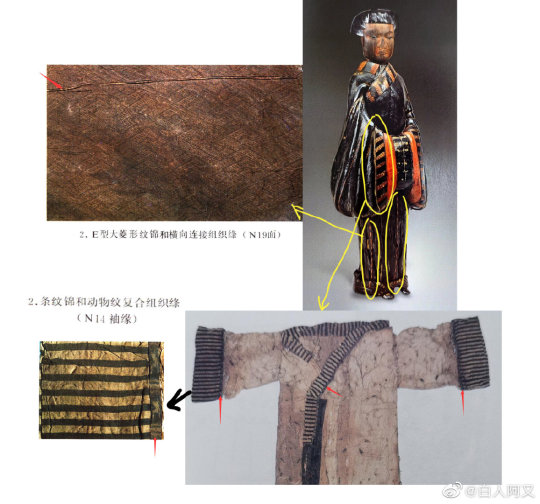
【Histoty Note】Warring States Period·Chu (state) Noble Women Fashion
Many people may wonder why this set of clothing and hairstyles are so similar to Japan, but the fact is this kind of clothing and hairstyle existed in China at least 1,000 years earlier than Japan.
During the China Warring States Period, it was popular for aristocratic men and women to wear robes.
Lacquered wood figurines and robe with similar images have been unearthed from the Shayang Tumbun Chu Tombs and the Chu Tombs at Mashan, many of which adopted the "three-dimensional structure" technique.
For example, a roughly rectangular piece is caulked at the intersection of the robe's sides, skirt sides and sleeve armpits. At the same time, the lower edge line of the top and the upper edge line of the lower skirt are incrementally extended, and then sewn into one body. It is called "Ming three-dimensional structure".
Its ingenuity is that while the outer contour of the garment remains unchanged, it effectively expands the inner space of the garment body, making it convenient for people to wrap the garment from the front to the back when wearing it, without damaging the original collar and garment forms.
The attire of aristocratic women from the Chu state in this set was restored based on the lacquered wooden figurines of the Chu tomb in Shayang. Their foreheads and temples hair are fluffy, and they have a hanging bun at the back of their heads. They wear robes that are connected up and down, and are decorated with brocade inlays at the seams.
The wearing method is the "layering method", two robes are stacked together in advance and then worn as a whole. This allows the collar edge of the lining to be show parallel to the collar edge of the outer garment, and a section of the lining to be show behind the lapel.The brocade edge is decorated with a wide belt and fixed with double belt hooks.
This "layered" wearing method shows the layers and details of Chu people's clothing, and can also show the graceful beauty of the body.
In addition, many creative clothing styles and fabric patterns emerged during the Spring and Autumn Period and the Warring States Period, bringing with them the unique atmosphere, mysterious imagination and ultimate romance of that era, becoming our inexhaustible source of art.
--------
Recreation Work by : @裝束复原
Weibo 🔗:https://weibo.com/1656910125/NhBx1oi5n
--------
#chinese hanfu#Warring States period(475–221 BC)#Chu(State)1030 BCE – 223 BCE#hanfu#hanfu accessories#hanfu_challenge#chinese traditional clothing#china#chinese#hanfu history#hanfu fashion#imperial china#chinese culture#chinese style#historical fashion#Hanfu From China#漢服#汉服#楚国
634 notes
·
View notes
Text

Fooduary Day 10: Dragon's Beard Candy
Happy Lunar New Year!!! This one probably doesn’t seem very obvious but a white-candy version would be terribly unlucky!! (And I need all the luck I can get). So I tried to make the lantern slightly reminiscent of the treat while the character is styled in Han Dynasty fashion. According to the legend-history of dragon’s beard candy it was invented in the Han Dynasty (202 BCE 220 CE) which makes it our oldest dessert yet! And yeah, I went off script for this one. Day 10 was supposed to be Cinnamon rolls but I’m moving some stuff around because I so rarely get the chance to post something to celebrate.
I am the artist! Do not post without permission & credit! Thank you! Come visit me over on: instagram, tiktok or check out my coloring book available now \ („• ֊ •„) /
https://linktr.ee/ellen.artistic
#dragon's beard candy#han dynasty clothing#fooduary#art challenge#historical fashion#ellenart#lnart#character design#digital illustration#historically inspired#fooduary2024#dragons beard#hanfu#happy CNY#happy lunar new year#year of the dragon#chinese new year
355 notes
·
View notes
Text

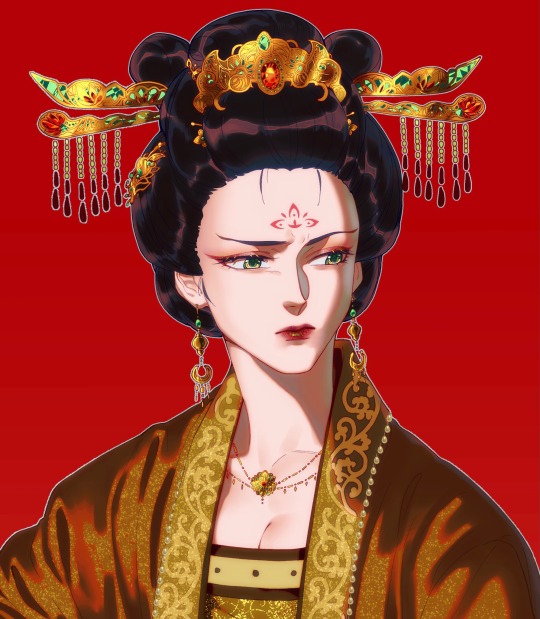
🔥👑 Fearsome empress 👑🔥
179 notes
·
View notes
Text
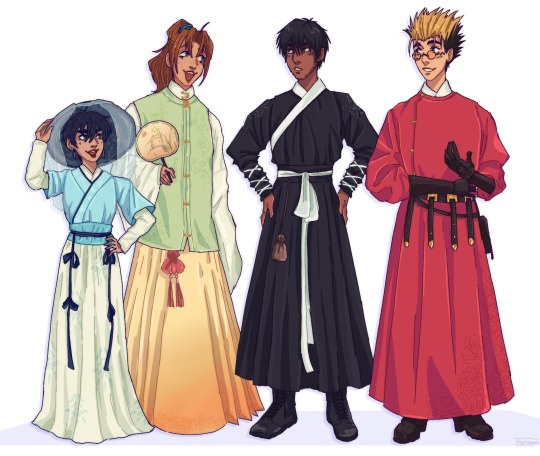
messing around with trigun hanfu designs for fun ∠( ᐛ 」∠)_
#meryl stryfe#milly thompson#nicholas d. wolfwood#vash the stampede#trigun#my art#PLSSS don’t think too hard abt the logistics or historical accuracy of this LMAO#i just wanted 2 see them in hanfu tbh….#i tried matching the designs w their og outfits…wah#if i revisit them in the future there is a 98% chance im gonna change up the designs LOL#I HAVE A LOT TO SAY ABT THESE DESIGNS KINDA maybe i will make a separate post#wow i just realized meryl is so small here. i love her
347 notes
·
View notes
Text
Does anyone who has access to Chinese websites could help me find a pattern for a warring states period hanfu? I would really appreciate it <3 <3 <3
90 notes
·
View notes
Text

Nal in Ming Dynasty hanfu!! just wanted to put my pretty girl in a pretty outfit
closeups below the cut :))


#referenced from pictures I found online but I'm sure this is not at all historically accurate lmao#I'm chinese but that doesn't mean I actually know anything abt hanfu fjfkgjk#isn't there smth cardassian-lookin abt it tho. the square neckline?? the contrasting binding?? cardassians would totally wear mamian skirts#kinda inspired by fauvester's work. in the sense that I saw it and was like OMG COOL I wanna put aliens in pretty historical outfits TOO#ds9#cardassians#asit#a stitch in time#deep space nine#star trek#star trek fanart#nal dejar#narcissus's echoes#pythasposting#narcissus draws
186 notes
·
View notes
Note
hi! do you have any information on how hanfu were traditionally washed and stored? thank you :)
First, sorry that it has been so long. Then, sorry that it is a short answer. Hope it is alright.
Expensive clothes were not washed. In the old days they used a lot of plant dyes and those things discoloured when they came in contact with water. Modern plant dyes are slightly better due to the fixative used in dying but the colour still faded with every wash. Hence, people in the old days used to wear layers to avoid dirtied their fancy clothes with sweat.
Clothes can be scented with something called 熏笼/Xūnlóng (lit. "smoke cage").

It is usually made from bamboo, but rich people could have them made from porcelain, like this one from the Three Kingdoms period.

A book on incense from the Song dynasty, 洪氏香谱/Hóng shì xiāngpǔ (Hong's Book of Fragrance), recorded the method of scenting clothes: first placed a bowl of hot water to moisturize the clothes, then smoke the clothes with incense.
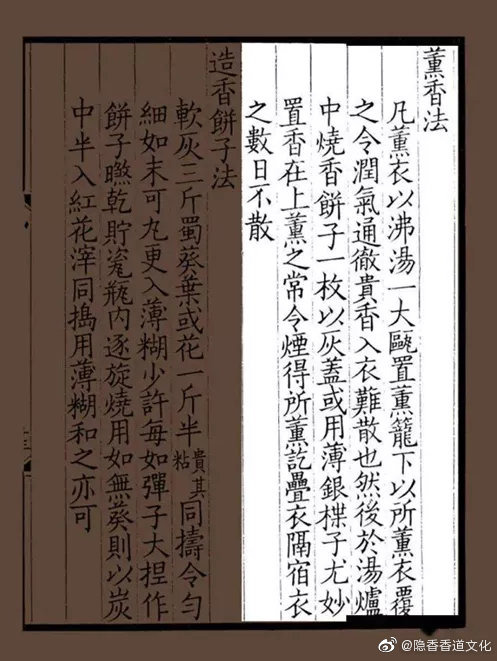
Sometimes clothes could be washed separately.
护领/Hùlǐng (lit. "Collar protector". They are usually white in colour) were often detachable so people only needed to wash that instead of the whole clothes. It could also be made from paper.
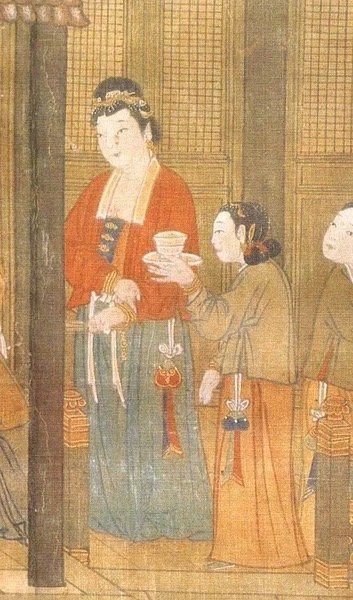
Those type of embroidered/painted collars from Song dynasty were attached separately, so it was possible that they were removed while the body of the clothes were washed separately.
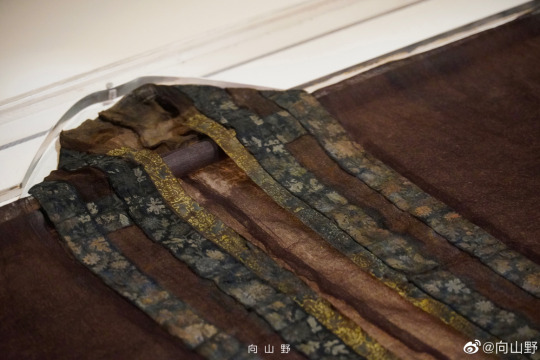
People usually washed clothes in water with the aid of a 捣衣杵/dǎoyī chǔ or 洗衣杵/xǐyī chǔ 搓衣板/cuō yī bǎn wash stick and/or a washboard.
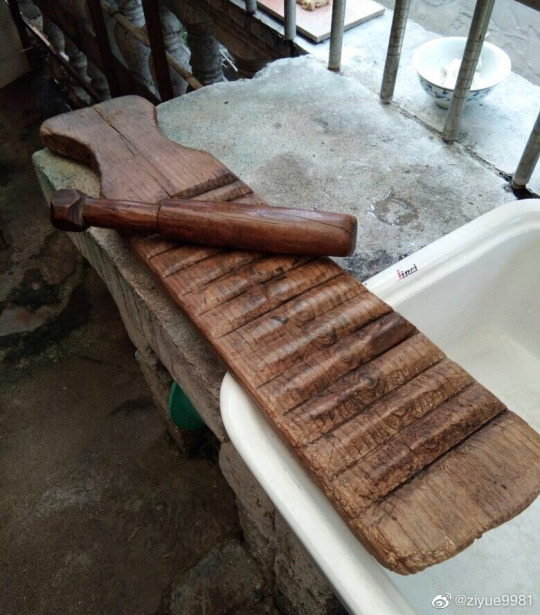
The earliest type of of soap recorded being used was 草木灰/cǎomù huī (wood ash). Other plant based soaps were also used, such as 皂荚/zàojiá (Gleditsia sinensis, black locust), 无患子/wúhuànzi (Sapindus saponaria, soapberries), 茶箍/chágū(the dregs from pressing oil from camellia seeds plus hay) etc.
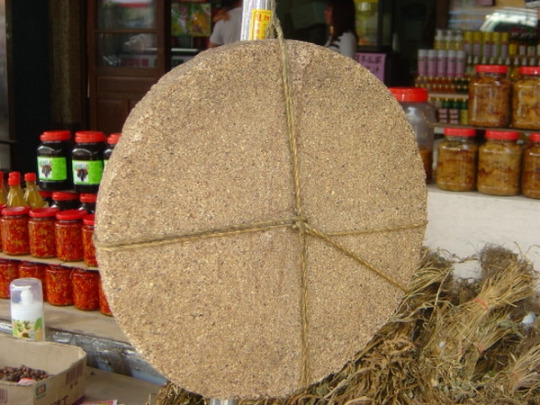
There were also records of potassium soap. Those soaps however were usually in liquid form and often used in fabric manufacture [我国古代的洗涤剂].
猪胰子/Zhū yízi Pig pancreas was also used. 白国斌/Bái Guóbīn (in 2021) wrote how they made pig pancreas soap when he was young - pasted the pig pancreas, then dried and powdered it. Later mix with alkaline water and made into ball to air dry.
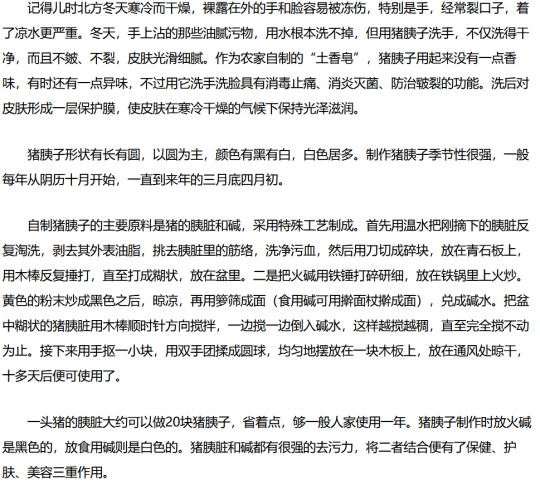
澡豆/Zǎodòu was made from the combination of powdered pig pancreas, bean powder and other herbs. There are many recipes, such as a recipe by 孙思邈/Sūn Sīmiǎo from Tang dynasty includes 16 materials. They were also known as 胰子/Yízi.
Aromatic herbs and other xiang (fragrant things) could also be added into the water in the end to add pleasant fragrance to the clothes, such as a book in Ming dynasty《多能鄙事》/Duō néng bǐ shì ("I can do a lot of humble things") by 刘基/Liú jī recorded: Tree Peony Bark 31.25g and Spikenard 3.125g, powdered.
#chinese history#hanfu#china#historical clothing#laundry#fouryearsofshades#long post#my ask box is finally cleared#i am free
857 notes
·
View notes
Text
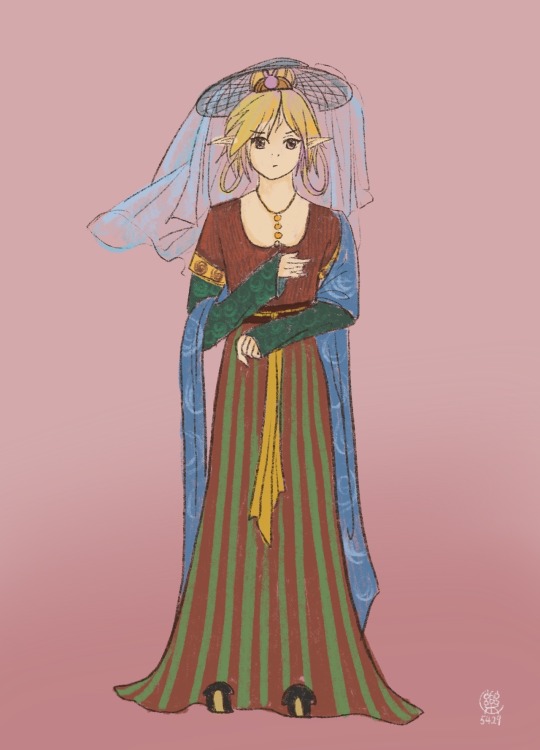
If Legend wears Hanfu…
Traditional clothing worn by the ethnic Han Chinese
References are used for the pose and historical costume.
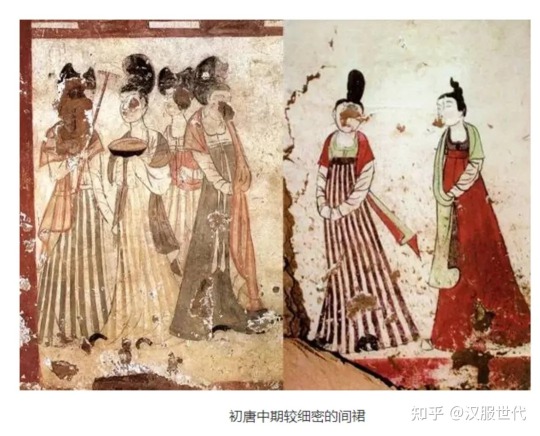
63 notes
·
View notes
Text



I will continue to draw my HxH hanfu/historical Chinese AU until I'm old and wrinkly and can't draw anymore
#hxh#killua#hunterxhunter#killua zoldyck#gon#fanart#anime#animeart#digitalart#sketch#hxhfanart#killugon#killugonfanart#hanfu#hanfuart#chinese clothing#historical au#gon freecs#gon x killua
144 notes
·
View notes
Text

Niè parents!
(Individual drawings bellow the cut)

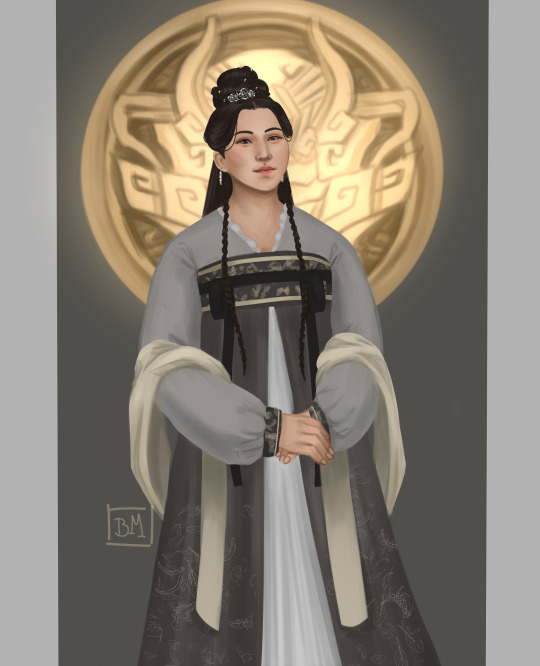

#i've been meaning to post them here for a while now but i never knew if i should post them individually or not#anyway i just had to give them faces#my references for their clothes was mostly from what people wore in cql#but also a few modern hanfu and one or two historically accurate models for the second nie mom#cql fanart#mdzs fanart#nie parents#qinghe nie#i don't think i should tag nmj and nhs since they're not in the picture but i think i will just because they don't really have names#nie huaisang#nie mingjue#nie family
223 notes
·
View notes
Photo


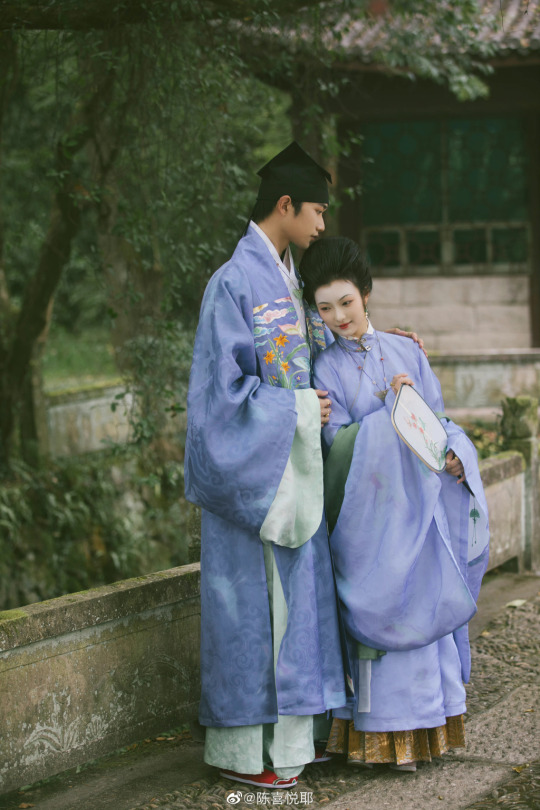


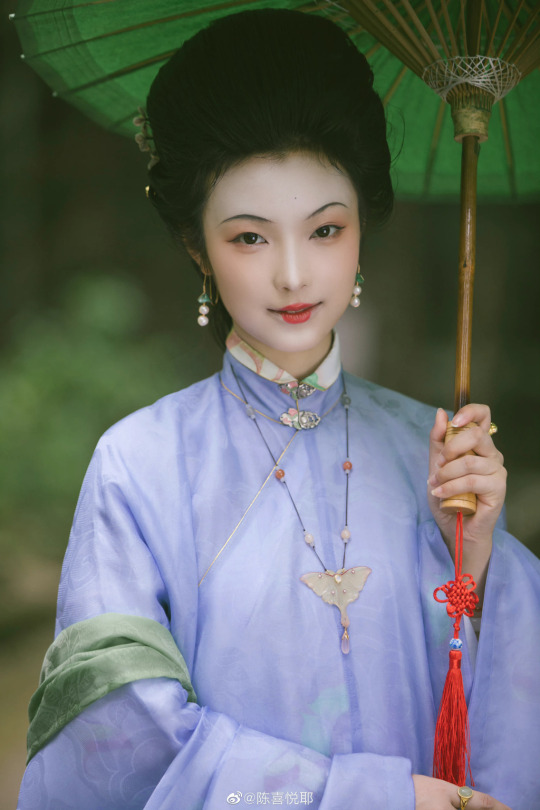


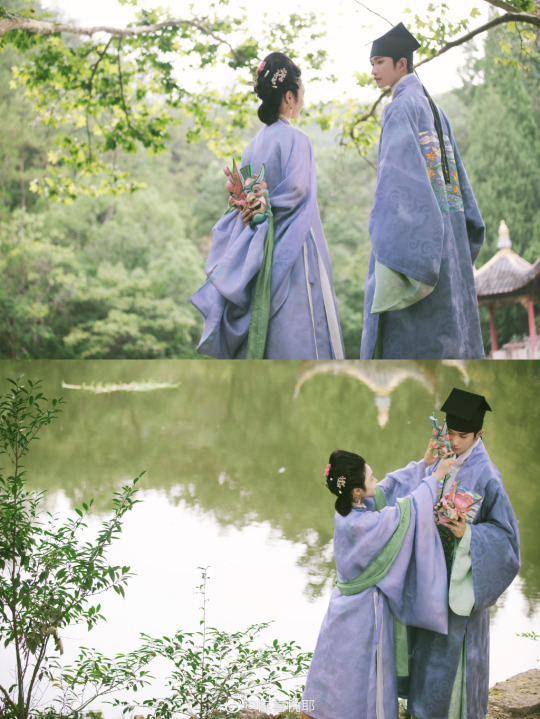
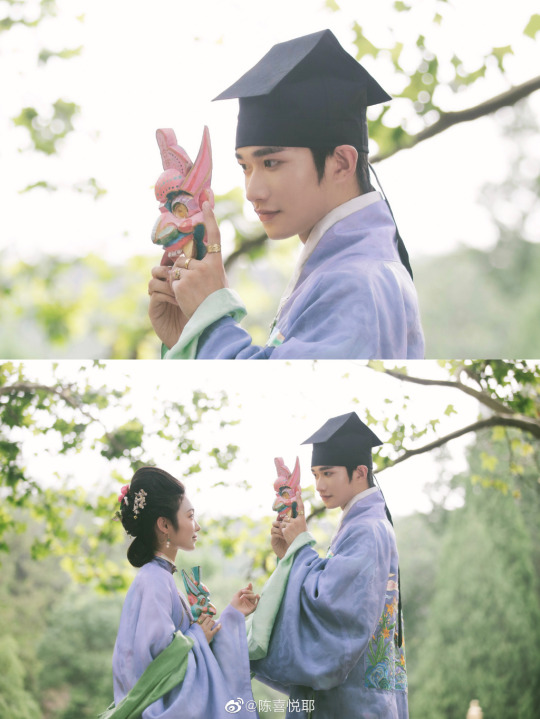
chinese hanfu by YUNJIN云今
156 notes
·
View notes
Text
[Hanfu · 漢服]Chinese Tang Dynasty(618–907AD)Traditional Clothing Hanfu Based On Dunhuang Mural
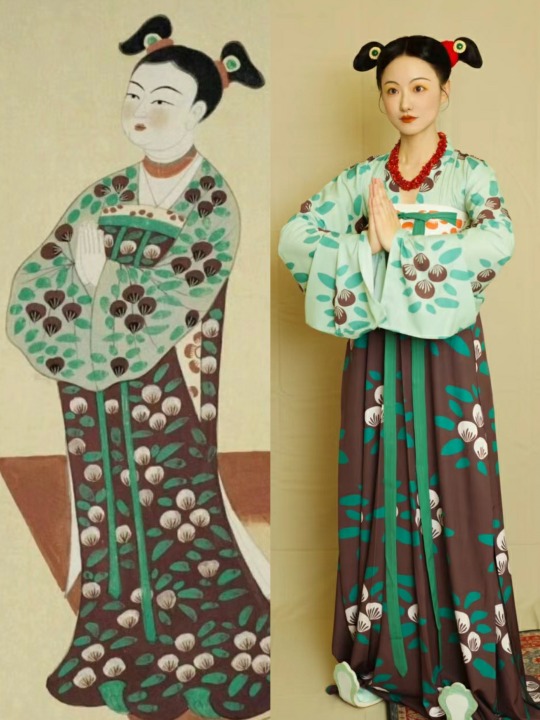

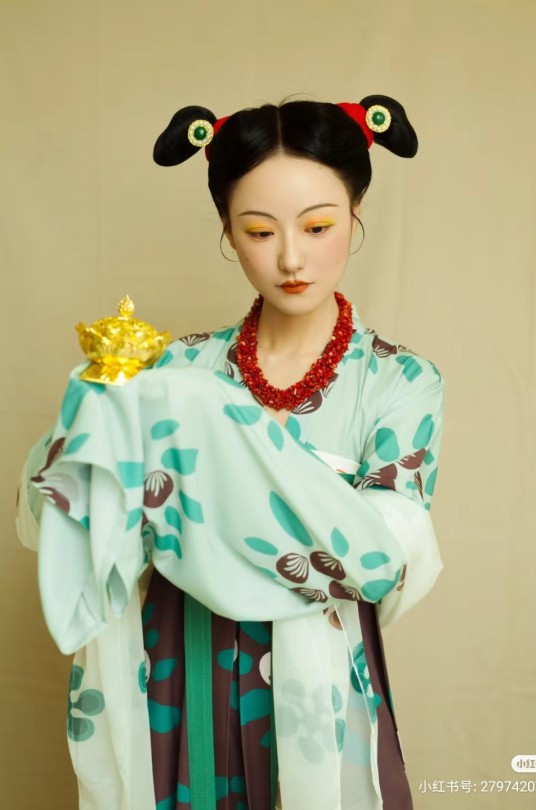
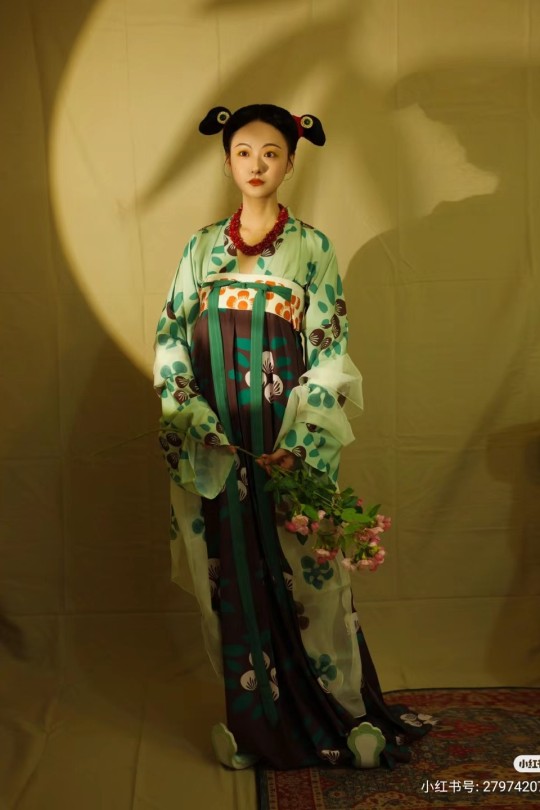

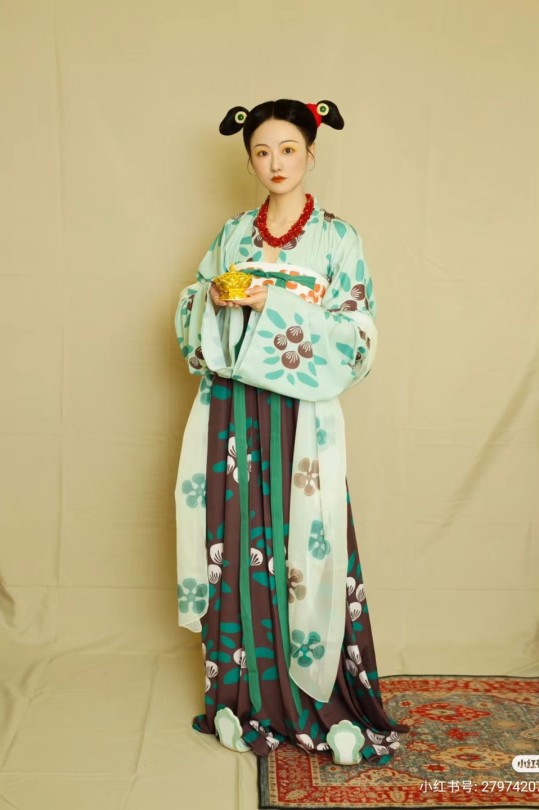

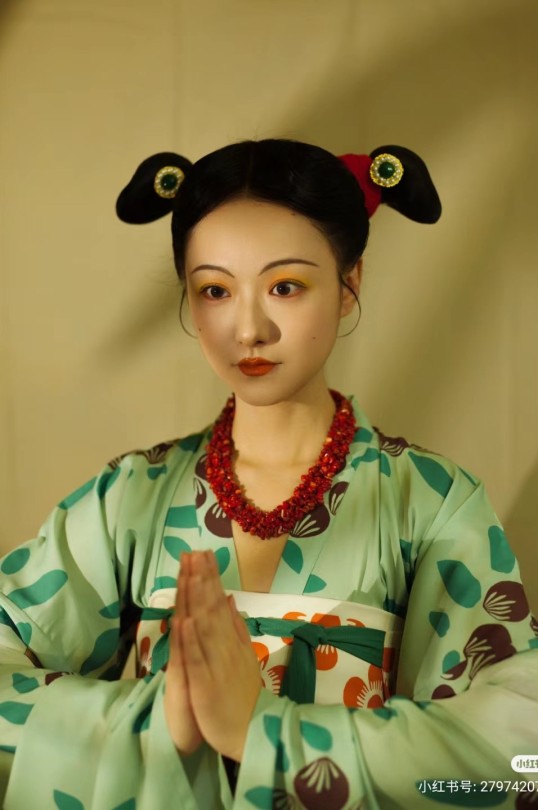


【Historical Artifacts Reference 】:
▶Woman Donor at Murals in Cave 114 of Mogao Grottoes in Dunhuang China

————————
📸Photo:@摄影师梁咩咩
👗Hanfu: 青泠谷
🧚🏻Model&💄Stylist:@张小花
Post-production: @张小花
🔗Weibo:http://xhslink.com/XzpEhG
————————
#chinese hanfu#Tang Dynasty(618–907AD)#hanfu#hanfu accessories#hanfu_challenge#chinese traditional clothing#china#chinese#hanfu history#漢服#汉服#中華風#china history#historical fashion#history
206 notes
·
View notes
Text
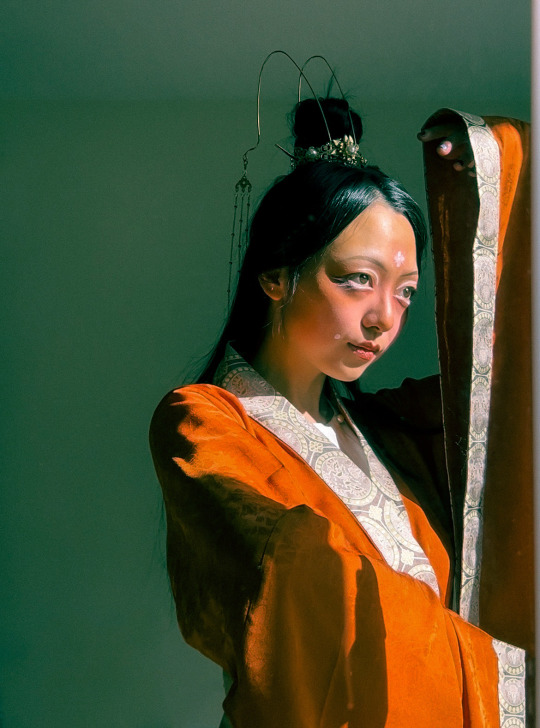
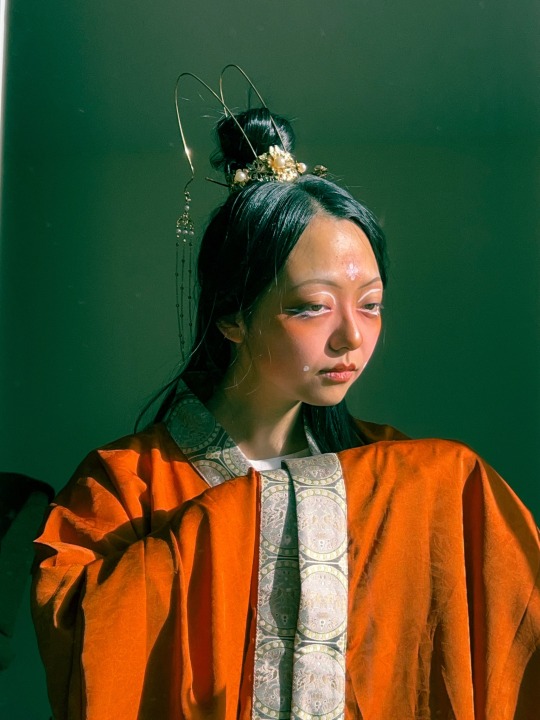
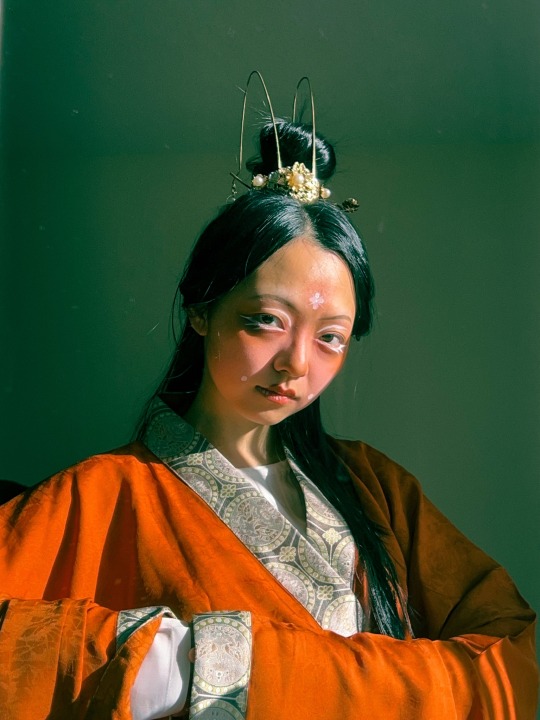
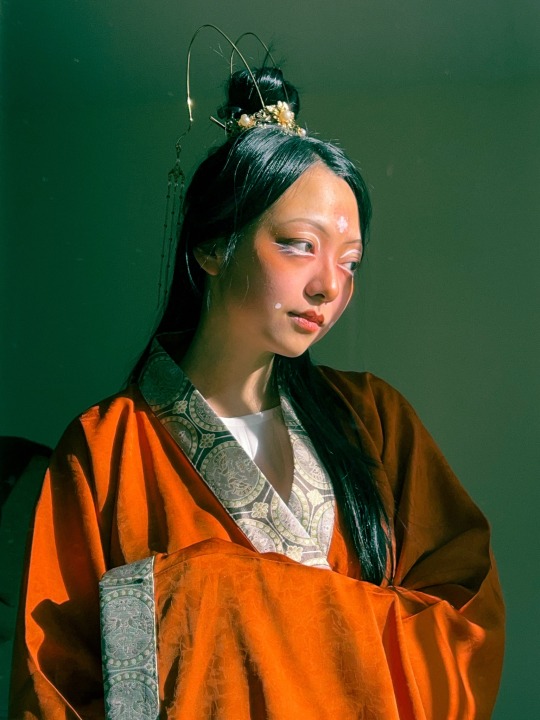
ᴛᴀᴋᴇ ᴍᴇ ᴛᴏ ᴛʜᴇ ʀɪᴠᴇʀ ᴀɴᴅ ʙᴀᴛʜᴇ ᴍᴇ ᴄʟᴇᴀɴ
以河水为予净身
#yovo does a face#chinese hanfu#hanfu fashion#南北朝#south and north dynasty#nanbei dynasty#historical fashion#your hanfu girl <3#Hanfu core#hanfu#汉服#aesthetic
49 notes
·
View notes
Video
youtube
Chinese Hats and Headwear in the Three Kingdoms 1994 and its history
One of our contributors @csarracenian has subtitled another educational video about the history of various hats and headwear in the 1994 Romance of the Three Kingdoms, explaining their history and meaning and showcasing the high research quality of the show.
Video is made by 是椰果啊 on bilibili & released with their permission.
#three kingdoms#chinese drama#dynasty warriors#chinese history#hanfu#historical#period drama#romance of the three kingdoms 1994#rotk#汉服#冠#history#clothing history#fashion history#ancient china
133 notes
·
View notes
Text

revisiting these designs because i don’t think i drew them enough
#botw#breath of the wild#botw zelda#botw link#tloz#loz#legend of zelda#my art#ONCE AGAIN PLS don’t look too closely bc it’s not super historically accurate#changed link’s clothes a bit to something more. practical ?!?!?!#zelda is still my fave to draw out of the two of them…LMAO#i luv tang dynasty hanfu <3#my day be so fine BOOM the drawing gets desaturated
725 notes
·
View notes